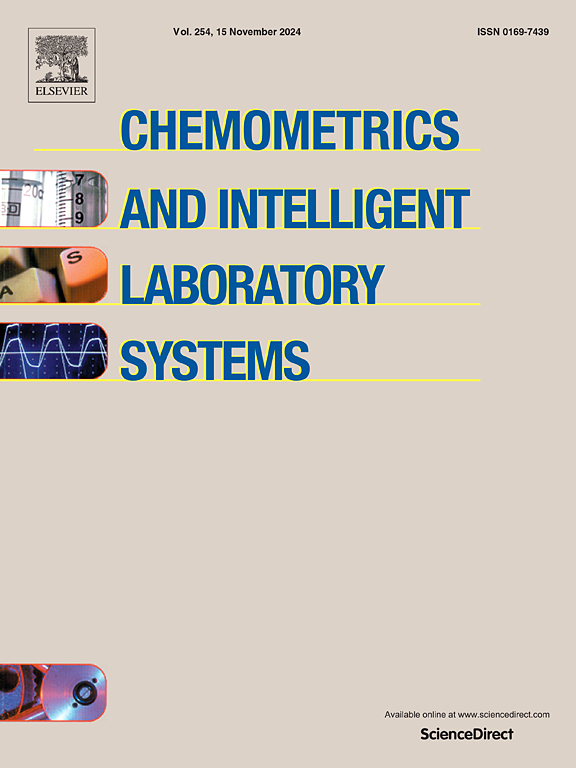在恒定绝对误差和相对误差之间进行选择并估算模型参数的增强设计
IF 3.8
2区 化学
Q2 AUTOMATION & CONTROL SYSTEMS
Chemometrics and Intelligent Laboratory Systems
Pub Date : 2025-03-07
DOI:10.1016/j.chemolab.2025.105362
引用次数: 0
摘要
在化学等实验科学中,测量误差可能是同方差或异方差。收集数据时应以确定正确的误差-方差结构为目标,因为不正确的模型会导致错误的结论。反映这一目标的设计标准是 KL-最优性。然而,KL-最优设计对于其他推论目的(如精确估算)来说往往是完全低效的。在这种情况下,增加一些实验点可能会很方便。这项工作的重点是通过加入一些额外的支持点来丰富设计,目的是保证最小的 KL 效率,以便在不同的方差规范之间做出最优选择。这种策略也适用于修改已有的设计,例如 D-最优设计,以解决正确的误差-方差规范问题。本文章由计算机程序翻译,如有差异,请以英文原文为准。
Augmented designs to choose between constant absolute and relative errors and to estimate model parameters
In experimental sciences such as chemistry, the measurement error may be homoscedastic or heteroscedastic. The data should be collected with the goal of identifying the right error-variance structure, as an incorrectly specified model would lead to wrong conclusions. A design criterion that reflects this goal is KL-optimality. Frequently, however, KL-optimum designs are wholly inefficient for other inferential purposes, such as precise estimation. In this case, the addition of some experimental points might be convenient. This work focuses on the enrichment of a design through the inclusion of some additional support points, with the goal of guaranteeing a minimum KL-efficiency to be able to optimally choose between different variance specifications. This strategy is also useful for modifying a design that is already available, for instance a D-optimal design, to manage the problem of correct error-variance specification.
求助全文
通过发布文献求助,成功后即可免费获取论文全文。
去求助
来源期刊
CiteScore
7.50
自引率
7.70%
发文量
169
审稿时长
3.4 months
期刊介绍:
Chemometrics and Intelligent Laboratory Systems publishes original research papers, short communications, reviews, tutorials and Original Software Publications reporting on development of novel statistical, mathematical, or computer techniques in Chemistry and related disciplines.
Chemometrics is the chemical discipline that uses mathematical and statistical methods to design or select optimal procedures and experiments, and to provide maximum chemical information by analysing chemical data.
The journal deals with the following topics:
1) Development of new statistical, mathematical and chemometrical methods for Chemistry and related fields (Environmental Chemistry, Biochemistry, Toxicology, System Biology, -Omics, etc.)
2) Novel applications of chemometrics to all branches of Chemistry and related fields (typical domains of interest are: process data analysis, experimental design, data mining, signal processing, supervised modelling, decision making, robust statistics, mixture analysis, multivariate calibration etc.) Routine applications of established chemometrical techniques will not be considered.
3) Development of new software that provides novel tools or truly advances the use of chemometrical methods.
4) Well characterized data sets to test performance for the new methods and software.
The journal complies with International Committee of Medical Journal Editors'' Uniform requirements for manuscripts.

 求助内容:
求助内容: 应助结果提醒方式:
应助结果提醒方式:


